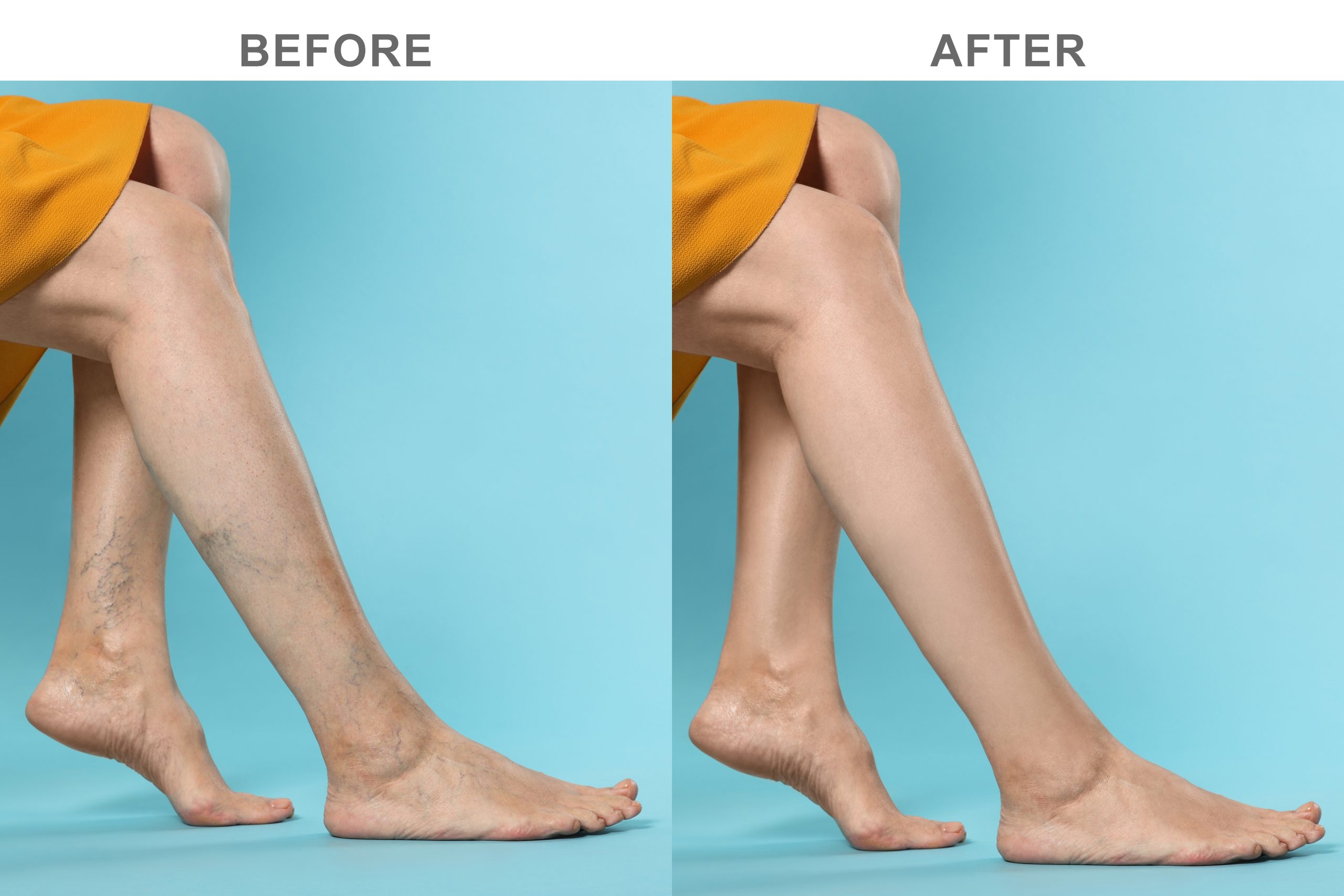Cataract
Which Surgery Is Best For Cataracts?

by admin
13th July 2023
9 minutes read
Cataracts are the most common cause of reversible blindness worldwide, but the good news is that it can be treated.. Cataracts can be removed through surgery, a common procedure that has proven medically safe. When you visit your surgeon before undergoing cataract surgery, your ophthalmologist will inform you about different types of techniques for cataract surgery. Your surgeon will also advise you on the most suitable surgery. However, you will need certain tests before going for cataract surgery. After the surgery, the postoperative period is crucial, and special care must be taken to ensure smooth healing.
If you want to know more about different types of cataract surgery to clear your cloudy vision, read on!
What Is Cataract Surgery?
A cataract is a dense, cloudy area that forms in the eye’s normally clear lens, causing vision disturbances. Cataracts usually develop slowly, affecting one or both eyes. A cataract begins when the proteins in the eye clump around the lens and prevent the lens from sending clear images to the retina (light-sensitive layers of the nerve tissue behind the eye, which receive images and send them as electric signals to the brain through the optic nerve).
Cataracts commonly occur due to aging, overproduction of oxidants, trauma, UV (ultraviolet) radiations, long-term use of steroids, medical conditions like diabetes (increased blood sugar levels), hypertension )increased blood pressure), etc.
Surgery is done to remove the cloudy lens and replace it with an artificial lens. There are 4 types of cataract surgeries:
- Phacoemulsification
- Extracapsular surgery
- Intracapsular cataract surgery
- Femtosecond laser-assisted cataract surgery (FLACS)
Why Do You Need Cataract Surgery?
If you want to get your cataracts treated, you will need surgery. Cataracts can cause blurred or cloudy vision, double vision, halos around the glaring lights, difficulty in seeing in bright sunlight, and driving, especially at night. If the above symptoms are causing difficulty in your routine chores, your surgeon will advise you for cataract surgery. Cataract surgery is also advised when cataracts are associated with other eye problems like macular degeneration, diabetic retinopathy, etc. Cataracts, if not treated timely, may result in loos of vision.
When To Have Cataract Surgery?
When dealing with cataracts, you should ask yourself the following questions, as answers to these questions helps you decide when to have cataract surgery.
- Are your cataracts causing difficulty in carrying out your daily or occupational duties?
- Can you drive at night without any visual impairment?
- Has your reading and watching become cumbersome due to cataracts?
- Are you facing issues while cooking, shopping, taking meds, or walking?
- Is your cataract can be managed through other alternative ways?
Types Of Cataract Surgery
There are multiple ways to treat and remove the cataract, and your surgeon will advise you regarding which surgical approach is right for you. Let’s have a look at different cataract surgeries:
Phacoemulsification
This surgery, also known as Phaco, is the most common approach for cataract removal. Normally, it takes up to 30 to 45 minutes to complete the surgery. The procedure is done under local anesthesia (your eye and the area around your eye will be numbed, but you will be awake during the surgery) and mild sedation.
Your surgeon will make a small incision around the edge of the cornea to create an opening through the membrane around your lens. Then a tiny ultrasonic probe will be inserted into the opening to break the cloudy lens into tiny pieces using sound waves that act as a microscopic jackhammer. An attachment on the probe sucks out the broken pieces of the cloudy lens.
After the fragments are removed, a new intraocular lens (artificial lens) is implanted in the natural lens capsule. Your ophthalmologist will use a hollowed-out tube to insert an intraocular lens through a tiny corneal incision.
Extracapsular Cataract Surgery
This surgery is used in highly advanced cataracts which are too dense for phacoemulsification surgery or when any other surgical approach is not an option. Anesthesia eye drops are injected around the eye tyo numb pain sensations. A bigger incision is made in this procedure. This is done to remove cataracts as a whole piece, not breaking them into fragments. Similar to phacoemulsification, an artificial lens is placed inside a capsular bag.
Few sutures will be used to close the incision, which might result in longer recovery of the wound as well as visual function. ECCE is further divided into 2 techniques – the traditional surgery with a larger incision and a small incision cataract surgery (SICS).Your surgeon will provide you with an eye patch to be used during the recovery period.
Intracapsular cataract surgery
This procedure is rarely used these days, but this technique might still be used under certain circumstances. This is also a manual procedure requiring an even bigger incision than extracapsular surgery, through which the entire lens surrounding with capsule is removed. Moreover, this procedure places an intraocular lens in different locations in the front of the iris.
Femtosecond laser-assisted cataract surgery (FLACS)
This procedure uses a laser instead of a manual technique to make an incision in your eye to remove the clouded lens. Hence it is a bladeless eye surgery with no requirement of a corneal flap. The laser softens and divides the cataract into smaller fragments to be easily extracted. This method enables the surgeon to make accurate incisions due to the laser used in this procedure and gives faster and more precise results.
Manual Vs. Laser-Assisted Cataract Surgery- Pros and Cons
Phacoemulsification, Extracapsular and Intracapsular surgery for cataracts are done manually while a laser is used in Laser-assited surgeries. Every surgery has it advantages and disadvantages. Lets discuss them in details.
Advantages of Manual Cataract Surgeries:
- It is an outpatient procedure, so you can go home the same day of surgery ( no hospital stay required).
- Quicker healing time (depends on the expertise of the surgeon)
- Decrease in the cost for the patient due to the manual procedure
- Insurance coverage is present. Most insurance companies cover the cost of manual cataract surgeries.
- Fewer complications associated when compared to laser assisted cataract surgery (LACS).
- Lower incidence of posterior capsule opacification (PCO) seen in first three months of surgery. In this condition, the back of the lens that wasn’t removed during the surgery now supports the new lens becoming cloudy and impairing your vision. This may cause loss of vision years after the cataract surgery
- The vision will become clearer after the surgery (only some patients would need glasses).
Disadvantages of Manual Cataract Surgeries:
- This procedure may involve the use of different intraocular lenses (IOLs)- For Eg:- usage of premium IOLs will result in clearer vision when compared to a lower-quality of lens used. LACS has an inbuilt preprogramming of laser to insert multifocal or toric lenses, thus eliminating the issue of choosing a different lens type.
- Traditional surgeries can not restore clearer vision in people with refractive errors like near-sightedness, far-sightedness, astigmatism, etc.
Advantages of Laser-Assisted Cataract Surgeries
- It is an outpatient procedure, so you can go home the same day of surgery.
- The laser can also divide and soften the cataract, resulting in less phacoemulsification energy required to remove the natural lens, leading to quick healing.
- Fewer complications are seen post-surgery due to the precision in the surgery.
- LACS is well tolerated by the patients.
- LACS restores clearer vision in people with refractive errors like near-sightedness, far-sightedness, astigmatism, etc.
- The vision will become clearer after the surgery (only some patients would need glasses).
Disadvantages of Laser- Assisted Cataract Surgeries
- The use of a femtosecond laser will add to the procedure time.
- There are increased risks and complications associated with this surgery.
- Insurance coverage may not be present for LACS. Most insurance companies cover the cost for manual cataract surgeries.
- The main disadvantage of this cataract surgery is the surgeon’s skills and capabilities for programming the laser used during the procedure. A well-trained surgeon only will be able to perform this procedure.
- Expensive devices and instruments are used in this surgery which can increase the cost for the patient. (disposable equipment adds to the cost of the surgery).
- As this procedure requires expertise, training is essential for the surgeon to perform this surgery (lack of training institutes that provide training).
What are the Complications of Cataract Surgery?
After any eye surgery, the risk of complication is always present. Some studies have shown that phacoemulsification surgery has proven to be 97 to 98% successful when compared to other types of cataract surgery. Some of the most common complications of all the cataract surgery include
- After any eye surgery, the risk of complication is always present. Some studies have shown that phacoemulsification surgery has proven to be 97 to 98% successful when compared to other types of cataract surgery. Some of the most common complications of all the cataract surgery include
- Inflammation – Development of swelling pain, redness and warmth over and surrounding the operated eye. This is the initial reaction to surgery and will subside after a few days with medications.
- Increased intraocular pressure- This is a serious complication that causes increased pressure in the eye and needs to be treated urgently as may cause vision loss, if not treated.
- Cystoid macular edema – This is also a serious condition where the retina behind your eye is swollen. This needs immediate attention as it may lead to vision loss.
- Retinal detachment – In this condition, the retina is displaced from its supportive tissue. This is a medical emergency and, if not treated, may lead to blindness.
The progression of cataracts will be a determining factor in deciding the surgical approach. All the surgeries provide similar results; the difference primarily lies in the duration of recovery and the development of complications. If your cataracts are causing difficulties with daily routine activities like reading, filling out forms, or driving, you should meet up with best ophthalmologists in bangalore.
We at Medfin get that each patient comes with unique concerns regarding cataracts. Our doctors will customize the approach to ensure each patient receives appropriate treatment and surgical approaches.
CATEGORIES
- ACL Reconstruction
- Anal Fissures
- Anal Fistula
- Appendicitis
- ASK A DOCTOR
- Benign Prostatic Hyperplasia
- Breast Lump Excision
- Cataract
- Circumcision
- Conditions & Diseases
- Cosmetology
- Covid-19
- Cure
- Endocrinology
- ENGLISH VIDEOS
- Eye Care
- Gallstones
- General Surgeries
- Government Schemes
- Gynaecology
- Gynecomastia
- Health
- Health Insurance
- Hernia
- Hindi
- Hip Arthoscopy
- Hip Replacement
- Hip Replacement Surgery
- Hydrocele
- Kannada
- Kidney Stones
- Knee Arthroscopic
- Laparoscopic
- LASER
- Latest Treatments
- Lifestyle
- Liposuction
- Medfin Stories
- Medicine
- Nephrology
- Ophthalmology
- Orthopaedic
- Paraphimosis
- Patient Testimonials
- PCL Reconstruction
- Phimosis
- Piles (Hemorrhoids)
- Pilonidal Sinus
- Proctology
- Prostate Artery Embolization
- Rhinoplasty
- Second Opinion
- Total Knee Replacement
- Urology
- Uterine Artery Embolization
- Uterine Fibroids
- Varicocele
- Varicose Veins
- Vascular
- VIDEOS







